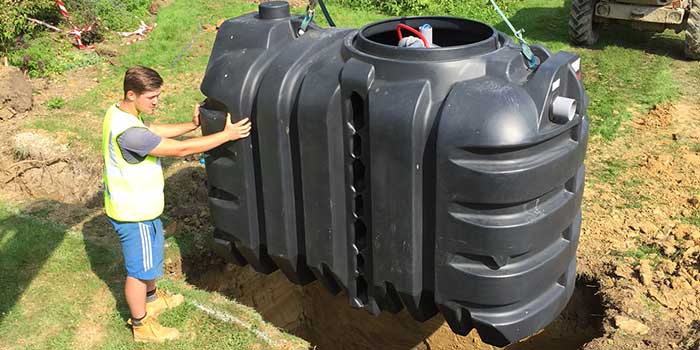When it comes to the differences between domestic and commercial sewage treatment options, the main factor is scale.
The differences in numbers of people using the facilities of a home residence compared to footfall in business premises are significant.
And recognising what are the required levels of sewage to be dealt for a type of property allows professionals to ensure the appropriate system is in place.
Domestic sewage treatment solutions
The vast majority of the UK is connected to the main sewage network to discharge waste away from properties safely.
An estimated five percent of homes depend on off mains solutions due to their rural locations.
But aside from those, most homes will rely on a traditional septic tank or a more recently installed sewage treatment plant.
Septic tanks can be relatively low maintenance and less expensive than other alternatives but they require a soakaway system to further treat discharge.
Current legislation states that septic tank output isn’t environmentally fit to discharge directly into a natural water source.
As a result, septic tanks aren’t appropriate for areas where the ground isn’t porous enough to also accommodate a soakaway system.
By contrast, sewage treatment plants achieve a higher standard of discharge that can be released into the water course directly.
And because of their greater operational efficiency, sewage treatment plants tend to only need emptying on an annual basis.
Commercial sewage treatment options
As with domestic residences, selecting the right type of sewage treatment plant for a commercial premises depends on several set considerations.
These include the number of bathrooms, sinks, toilets and ‘non essentials’ like dishwashers and washing machines.
The big difference is the number of occupants – rather than a set figure (family members and occasional visitors) commercial properties cater for many more.
Commercial sewage treatment plants are large-scale waste removal systems installed in settings like offices, factories, farms and educational establishments.
As a rule of thumb, it’s advisable to install a system that can handle the waste of around one third of the workforce or occupants.
This may seem counterintuitive but in general, employees and students tend to be far less likely to use waste-creating facilities than residents at home.
For a commercial property, it’s also advisable to seek professional expertise on restrictions on what can be classed the same as ‘domestic’ waste.
For example, effluent from chemical toilets, commercial cooking facilities, public swimming pools and more may all be subject to further regulation.
And finally, if a sewage treatment plant is expected to deal with the waste of 600 people rather than six, it will probably require a powered motor to circulate air.
This helps the naturally occurring bacteria break down waste more efficiently and leave wastewater that is clean enough to re-enter the water course.
Want to know more?
Whether you’re looking at options for your home or business, it’s important to select the right sewage treatment system to suit your needs.
Get in touch to talk to a friendly member of our helpful team to help you avoid unnecessary costs further down the line.
